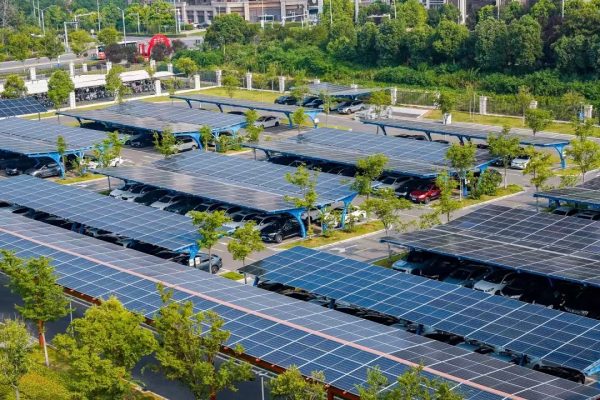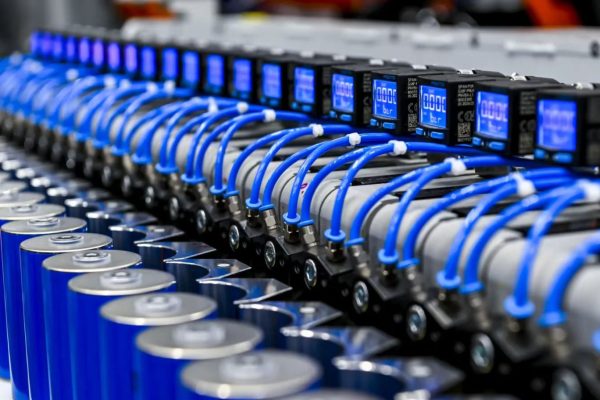Pros, Limitations, and Tips for Real-World Deployments
The Push for “Smarter” Inverters
As smart hybrid inverters become the norm in small PV + ESS projects, WiFi-based monitoring has emerged as a default feature — enabling real-time data access, remote diagnostics, and OTA firmware upgrades.
But for export markets and non-urban deployments, many installers ask:
“Is WiFi monitoring reliable enough for long-term use?”
This article evaluates the real-world strengths and weaknesses of WiFi monitoring in smart inverters — especially for international deployments, rural installations, and projects with limited after-sales support.
📶 What Is WiFi Monitoring in Inverters?
Most modern hybrid inverters include a built-in WiFi module or external dongle to connect with local routers. Once online, the inverter can:
- Upload PV, battery, and grid data to the cloud
- Send fault alerts and status updates to mobile apps or portals
- Receive firmware updates (if supported)
- Allow remote configuration (in advanced models)
✅ Benefits of WiFi Monitoring
1. Cost-Effective and Easy Setup
- No need for SIM cards or data plans
- Uses homeowner’s existing router
- Installation takes minutes
2. Real-Time Visibility
- Tracks performance metrics: PV production, battery SOC, energy flow
- Allows remote troubleshooting for most common faults
- Often paired with polished apps for clients and installers
3. Remote Support for Exported Units
For export clients, WiFi gives zero-cost ongoing access to overseas systems — especially useful when you can’t physically revisit the site.
🧠 Tip: Ideal for homes, light C&I, and demo projects where internet access is stable.
❗ Limitations and Risks in Export Scenarios
While WiFi is great in theory, real-world conditions vary — especially in emerging markets, rural zones, or off-grid regions.
1. Weak or Unstable WiFi Signals
- Rooftop or utility rooms often have poor coverage
- Concrete walls, metallic enclosures block signal
- WiFi drops after router firmware or password changes
🛠 Mitigation:
- Use WiFi signal repeaters
- Choose inverters with signal strength indicators
- Pre-configure WiFi before shipping
2. Client Changes Router or Password
- Most clients forget to reconnect the inverter
- System goes offline indefinitely
- You lose remote access
🛠 Mitigation:
- Train clients on WiFi reset
- Use inverters that auto-scan saved networks
- Offer LTE fallback where possible
3. No Internet Access On-Site
- Common in new developments, rural areas, or construction zones
- Makes commissioning and first sync difficult
🛠 Mitigation:
- Use smartphone hotspot for initial setup
- Choose inverters that store local logs for later sync
- Offer optional 4G dongle backup
4. Privacy & Firewall Restrictions
- Some enterprise clients block device access to unknown cloud IPs
- Certain countries may limit connectivity to foreign servers
🛠 Mitigation:
- Confirm cloud server location with vendor
- Choose platforms compliant with GDPR, GBA, etc.
- Use Ethernet or RS485 as backup for enterprise projects
🔁 Alternatives and Backups: WiFi Is Not the Only Option
| Option | Description | Use Case |
|---|---|---|
| Ethernet (LAN) | Direct cable to router | Industrial/office installs with fixed networking |
| 4G Dongle | SIM card module for cellular | Rural/off-grid or unstable WiFi zones |
| Bluetooth | Local phone app pairing only | Short-range commissioning only |
| RS485/Modbus | For 3rd-party SCADA/EMS | Large or integrated systems |
📦 Pro tip for exporters: Offer WiFi+4G kits as default for off-grid or international deployments.
📊 Real-World Use: When WiFi Works Best
| Scenario | Reliability |
|---|---|
| Urban residential home with stable WiFi | ✅ Excellent |
| Rural house with old router or weak signal | ⚠️ Unstable unless boosted |
| Off-grid cabin or telecom site | ❌ Not feasible without 4G |
| Commercial building with IT firewall | ⚠️ Possible, but needs setup support |
| International export with no local installer | ✅ If WiFi access is stable and pre-configured |
✅ What to Ask Suppliers About WiFi
Before choosing an inverter brand, clarify:
- Does the WiFi module support auto-reconnect?
- Can clients reset or rebind WiFi from the app?
- How often does data upload (1-min? 5-min?)
- Can OTA updates be paused or rolled back if needed?
- What is the average data gap from offline events?
Also test their mobile app UX and login stability — some platforms are far more polished than others.
📦 Export Tip: Bundle Monitoring as a Sales Feature
If you’re exporting all-in-one systems:
- Pre-register units and set time zones before shipping
- Create a demo account for your clients to preview data
- Offer free 12-month monitoring and support via app
- Position 4G module as optional backup ($ add-on)
WiFi Monitoring Works — If You Plan Ahead
WiFi monitoring in smart inverters is highly effective when the network environment is reliable and the client understands basic reconnection steps.
📶 For exporters and international integrators, success depends on preparation, training, and having a backup plan (like 4G).
WiFi is a key part of building modern ESS projects — but don’t rely on it blindly. Always audit the site, understand the client’s tech comfort level, and confirm whether additional hardware is needed.









